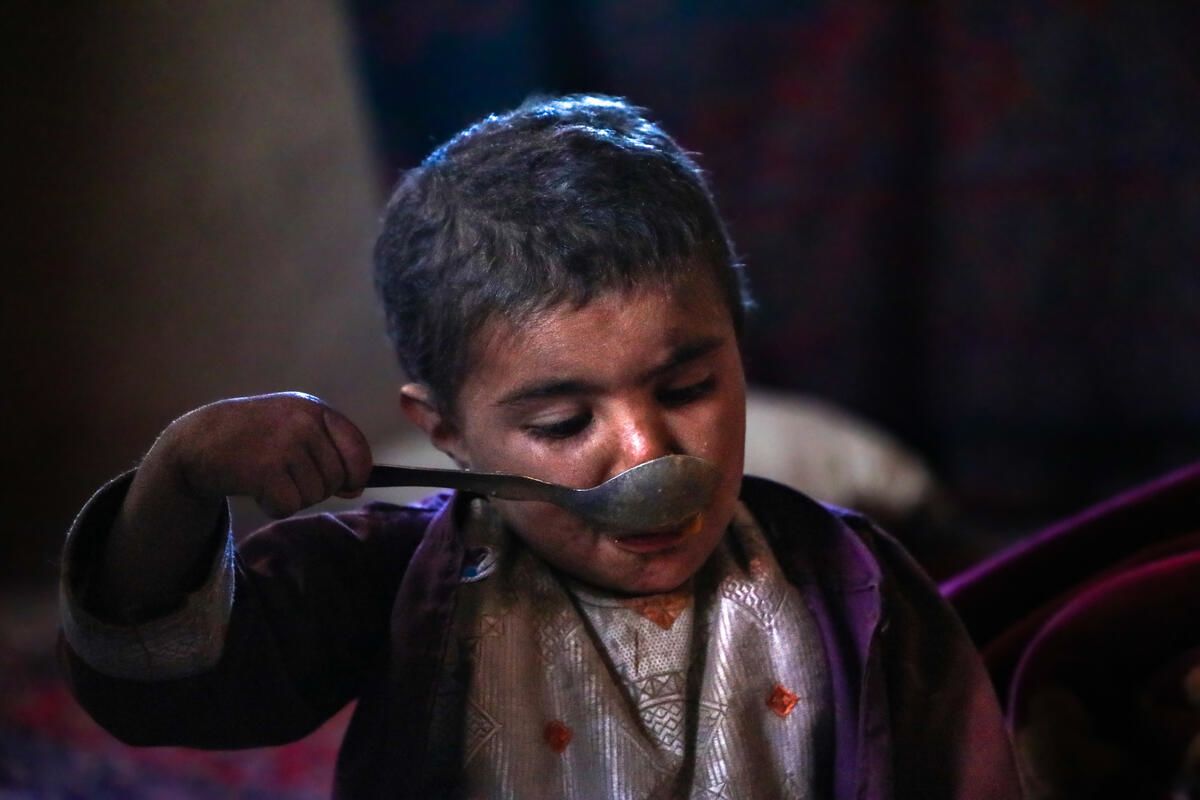Gul Ahmad in Afghanistan

“I used to tell my kids that the meal was ready, on its way, and we'd get to it soon. Keep silent; we'll get to it. I used to do [this] to make my children calm.” These are the heart-wrenching words of Amir, a father in Afghanistan, who has to tell his children that food is on the way, even when it isn’t.
Gul Ahmad, Amir’s 13-year-old son, has lived amidst the constant upheaval of war for most of his life, forced to flee from one place to another. Now, he is dealing with the aftermath of conflict.
“Conflict is not a good thing.” Gul Ahmad explains. “In conflicts, people lose all the good things they have. They experience displacement until they eat all they have. We lost our land, house, shop and good life.”
For children living in Afghanistan today, conflict, violence and displacement have been an inevitable feature of childhood. But even after the most intense phase ended in 2021, the family has grappled with soaring food scarcity and forced displacement, which is making it impossible for Gul Ahmad to go to school or have any kind of childhood.
“In the past years, there were days when there was no other suitable food in our house apart from Qulorturosh [a kind of meal made of flour and yoghurt],” he remembers.


Gul Ahmad used to go to school, but being on the move meant he had to abandon his studies and focus on helping the family. Now he works as a shepherd tending the family’s goats and sheep.
“There is nothing else I can do to get food, except shepherd until they give me 1000AFN [USD$14.50] a month so that we can buy something to eat. Right now, we don't have enough flour and rice to eat, and we can't afford to buy them.”
The family goats and sheep used to generate a little income for purchasing food, but now that drought has caused livestock prices to plummet, the family has to sell at least three or four animals just to get some flour, oil and rice.
“We can buy anything with two sheep if the prices are high, but now if we sell three or four sheep, we can't buy enough,” Gul Ahmad says, speaking like a man far beyond his age. “These years are not good. Our animals go to the mountains to eat, but there is not sufficient food for them, so we also feed them twice per night. If we don't have livestock, we will face hunger, and we won't have anything to eat.”
It’s an unsustainable cycle that the family cannot maintain. Right now, more than half of Afghanistan’s population relies on humanitarian aid – higher than ever before - and almost 40% of the country does not get enough to eat each day. The fallout from years of conflict has led to an escalating hunger crisis, surpassing the available funding and assistance.
“I want those who provide aid to know about our lives that we don't have enough food to eat,” Gul Ahmad says.


For more on how ration cuts are affecting children and their families, please read World Vision’s new report here.
